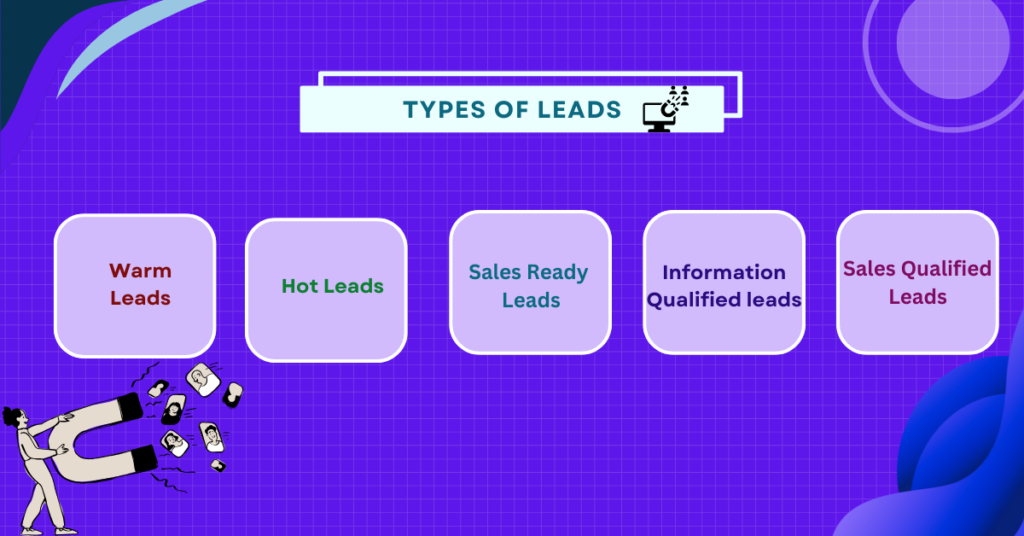Any effective business plan should include lead era and income, specifically inside the regions of advertising and income. Despite their connections and common overlaps, they have exceptional roles within the client acquisition method. Businesses looking to maximize their advertising and marketing efforts, improve conversion rates, and sooner or later increase sales should recognize the distinctions between lead generation and income. We’ll move into greater intensity about each of those thoughts beneath, emphasizing their functions, processes, dreams, and contributions to the income funnel as an entire.
Lead Generation:-
The method of attracting and turning strangers and potentialities into someone who has expressed interest in the products or services offered with the aid of your commercial enterprise is referred to as lead technology. To put it in another manner, it generates a hobby in a corporation’s services to develop a pipeline of viable customers. The foremost purpose of lead generation is to gather contact info from potentialities and keep onto them till they’re prepared to make a buy. This is generally done through several advertising techniques.
The Lead Generation Process:
There are multiple steps within the lead-era technique, all intended to engage possibilities at numerous stages of the purchaser’s journey. Here is a precis of the primary movements which might be worried:
Attraction: Attracting feasible customers is the preliminary level within the lead technology manner. Numerous marketing techniques are used to try this, which include pay-per-click (PPC) marketing, social media advertising, content material marketing, and Search Engine Optimization (SEO). The aim is to attract folks who may be interested in your items or services.
Engagement: Engaging capability leads is the following stage after attracting them. One way to reap that is by offering useful content material, which includes eBooks, whitepapers, webinars, and weblog entries. Your brand should be located as a useful resource by creating content that addresses the demands and pain points of your target audience.
Conversion: Some potentialities could be prepared to transport forward after reading your fabric and responding to it. This is the point at which conversion is beneficial. Usually, conversion includes giving a prospect some price for their contact information. This might be something from a free trial to a discount code to a downloadable resource—anything to lure them to deal with you with their smartphone number or electronic mail address.
Qualification: Since not all leads are equal, lead qualifying is important. Determining if a lead is an appropriate fit for your products or services is known as lead qualification. Typically, a mixture of behavioural records—like internet site visits, electronic mail openings, and content material downloads—and demographic statistics—like process identification, corporation size, and enterprise—is used to acquire this. The income team of workers is then tasked with imparting extra nurturing to certified leads. The sales staff is then tasked with providing more nurturing to qualified leads.
Types of Leads:

Marketing Qualified Leads: These leads have proven hobbies in your content material but are not quite delighted to shop for. MQLs have demonstrated interest in your content—they’ll have downloaded a whitepaper or signed up in your e-newsletter—but they still want to be cultivated more before they may be forwarded to the sales group.
Sales Qualified Leads: These are leads that the advertising and marketing crew has certified and decided are organized to be delivered to the income team. Sales Qualified Leads are more likely to be in addition to the purchaser’s journey and have verified a higher level of involvement and interest, each keeps in mind a stronger motive to shop.
Measuring Lead Generation Success:-
Monitoring important indicators is essential to determining how well your lead-generating activities are employed. Among the most significant metrics for lead generation are:
- Conversion Rate: This analyzes the proportion of website visitors who complete the specified activity, like completing a form or downloading a file. An expanded conversion fee is an indication of a successful lead technology.
- Cost Per lead: The average price of acquiring a lead is determined by CPL. Maintaining a low value for this statistic will help you check that your lead-generating activities are economical.
- Lead Quality: Not every lead has a similar cost. Evaluating a lead’s capability to become a paying patron is part of measuring lead satisfaction. Sales are much more likely to return from first-rate leads.
- Lead Volume: This degree continues track of all of the leads that were produced through a given time body. To make sure that you’re drawing in leads who are interested in your accuracy or career, you want to strike a balance between quantity and excellent, even though quantity is essential.
Sales: Converting Leads into Customer

The system of turning qualifying leads into paying clients is called sales. Lead generation concentrates on drawing in and teaching potential clients, whereas income works on finishing the transaction and changing the leads into earnings. Leading possibilities through the final stages of the buyer’s adventure, addressing their concerns and objections, and convincing them to buy is the primary purpose of income.
The Sales Process:-
Compared to lead generation, the sales process is usually more straightforward and individualized. It entails actions intended to establish rapport with prospects, comprehend their problems, and hand customized answers. An outline of the crucial steps in the sales process is provided below:
- Prospecting: Sales groups frequently start through inspection, which entails comprehending potential customers who can be a great match for the employer’s services or products. These can involve accomplishing leads generated by using the advertising group, to conduct cold outreach to new prospects. By the marketing team, as well as conducting cold outreach to new prospects.
- Qualification: Qualifying a prospect is the next step after figuring them out. This involves figuring out whether the capacity purchaser needs the good or provider, whether or not they have the cash of their price range, and whether or not they are authorized to make purchases.
- Needs Analysis: A necessities analysis is performed with the aid of the salesperson to envision the particular issues, limitations, and objectives of the possibility after the change has been certified. This is critical in customizing the sales pitch to the unique situations of the chance.
- Presentation: The salesperson offers the prospect a solution that solves their problems based on the requirements analysis. These could be a proposal, a product demonstration, or a thorough justification of how the prospect can profit from the good or service.
- Handling Objections: Before they are willing to buy, potentialities often have objections or concerns that insist be addressed. Addressing those arguments, supplying additional information, and attracting the prospect’s fears are the shop clerk’s duties.
- Closing: The salesman makes the sale request during the closing phase. This can entail settling on terms, completing the specifics, and getting the prospect to commit. Although closing strategies differ, the objective is to persuade the potential customer to buy from you.
- Follow-Up: To guarantee client pleasure and resolve any issues that arise after the deal is concluded, follow-up is crucial. Additionally, there are chances to develop enduring relationships with clients and upsell and cross-sell at this phase.
Sales Strategies and Techniques:-

Successful sales techniques are essential for completing transactions and increasing income. The following are some of the most popular sales tactics and strategies:
- Solution Selling: The intention of answer promoting is to pinpoint the exact problems that the possibility is experiencing after which provide a custom-designed answer to meet those demands. The sales clerk stresses how the product can deal with the chance issues in preference to highlighting its characteristics.
- Consultative Selling: When a salesperson makes use of consultative selling, they take on the function of a reliable marketing consultant, imparting the chance professional advice and insights to help them make a knowledgeable desire. This technique involves posing insightful queries, paying interest, and making tailored suggestions.
- Relationship Selling: A vital component of courting sales is setting up trusting bonds with potential clients. With an emphasis on rapport-building, belief, and sustained involvement, this strategy aims to domesticate committed customers who will make repeat purchases.
- Challenger Selling: Taking the fee of the sales verbal exchange and the crucial possibility for explanation are key additives of the challenger income method. When salespeople employ this method, they offer sparkling viewpoints and ideas.
- Social Selling: Social promoting utilizes social media channels to engage with ability customers, establish rapport, and distribute insightful content. Salespeople can interact with prospective clients and develop leads through the years employees grow profiles on sites consisting as LinkedIn.
Difference Between Lead Generation and Sales

| Aspects | Lead Generation | Sales |
| Objective | Attract and nurture Potential Customers | Convert leads into paying customers |
| Focus | Building awareness and interest in products and services. | Building relationships and closing deals. |
| Process | Broad and less personalized: involved marketing tactics | Direct and personalized: involved one-on-one interaction. |
| Metrics | Conversion rates, Lead volume, lead quality and cost per lead. | Close rates, average deal size, revenue sales cycle length. |
| Team Involvement | Primarily driven by the marketing team. | Primarily driven by the sales team. |
| Timeline | Longer-term involves ongoing nurturing. | The shorter term involves focused interactions. |
| Lead Handling | Generate and quality leads before passing them to sales | Handling and nurturing qualified leads to closure. |
| Technology Tools | Marketing automation platforms lead scoring tools | Customer relationship management systems. |
| End Goal | Create a pipeline of potential customers. | Finalize sales and generate revenue. |
Conclusion:
A great business plan must include both lead generation and sales, but they have different purposes and demand dissimilar strategies. While sales are concerned with turning leads into paying customers, lead generation is concerned with luring and developing potential clients. Businesses may streamline their client acquisition process, raise conversion rates, and increase revenue by knowing the distinctions between lead generation and sales and ensuring operations are aligned.
In conclusion, lead generation and sales are essential elements of a winning business plan, each with a unique but connected function in generating income. The first step is lead generation, which focuses on creating awareness and interest in your goods and services to attract and retain new clients. Building a pipeline of qualified leads that are ready to convert, involves a variety of marketing strategies.
The crucial next stage, however, is sales, when these qualified leads are engaged, connections are made, and eventually, transactions are closed. The goal of the more direct and individualized sales approach is to turn leads into paying clients and increase income for the company.
For the commercial enterprise to develop, both roles must cooperate. High-best possibilities are conveyed into the income funnel through green lead generation, and these leads become customers through a skilled income staff. Lead generation and income work together to build a clean and powerful consumer acquisition system that promotes long-term success and profitability.
FAQ’s:-
- What is lead generation?
Ans. The process of attracting and turning strangers and potentialities into human beings who’ve expressed hobby to your precise or provider is known as lead generation, and it usually involves a variety of advertising initiatives.
- Why is lead generation important?
Ans. It’s essential since it helps companies create a pool of prospective clients who can be developed into paying customers, resulting in increased sales and corporate expansion.
- What is the sales process?
Ans. Salesmen use a hard and fast strategy referred to as the sales process to turn qualifying leads into paying clients. This usually entails prospecting, qualifying, reading desires, making a presentation, responding to objections, last, and following up.
- What is a sales funnel?
Ans. The direction a lead takes from first awareness to the final buy is represented through a sales funnel, which is usually divided into phases like awareness, interest, desire, and motion.
